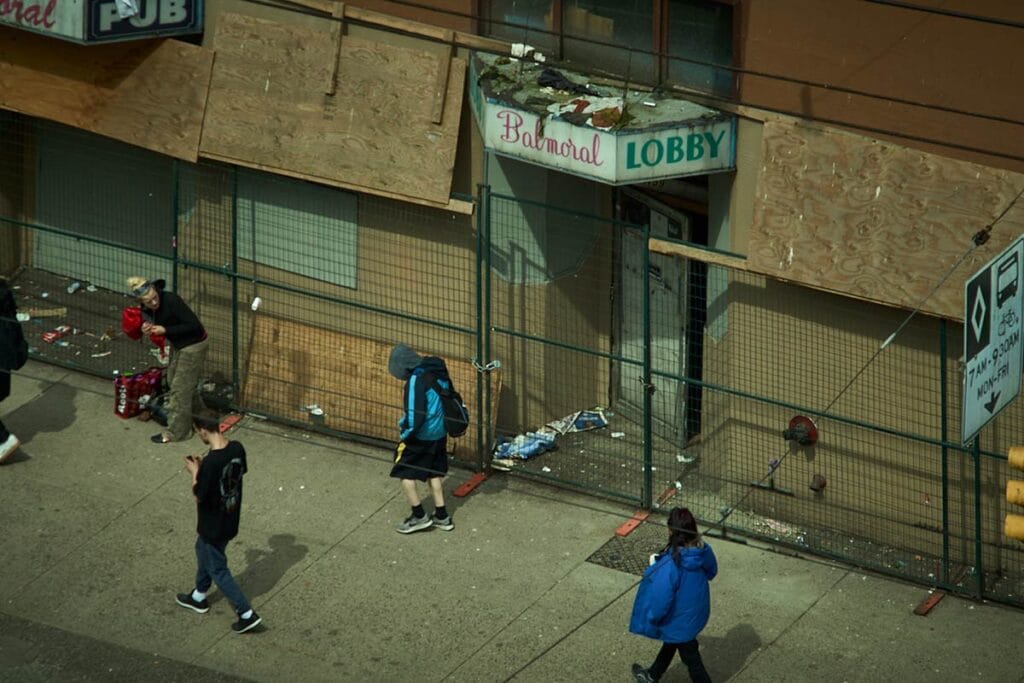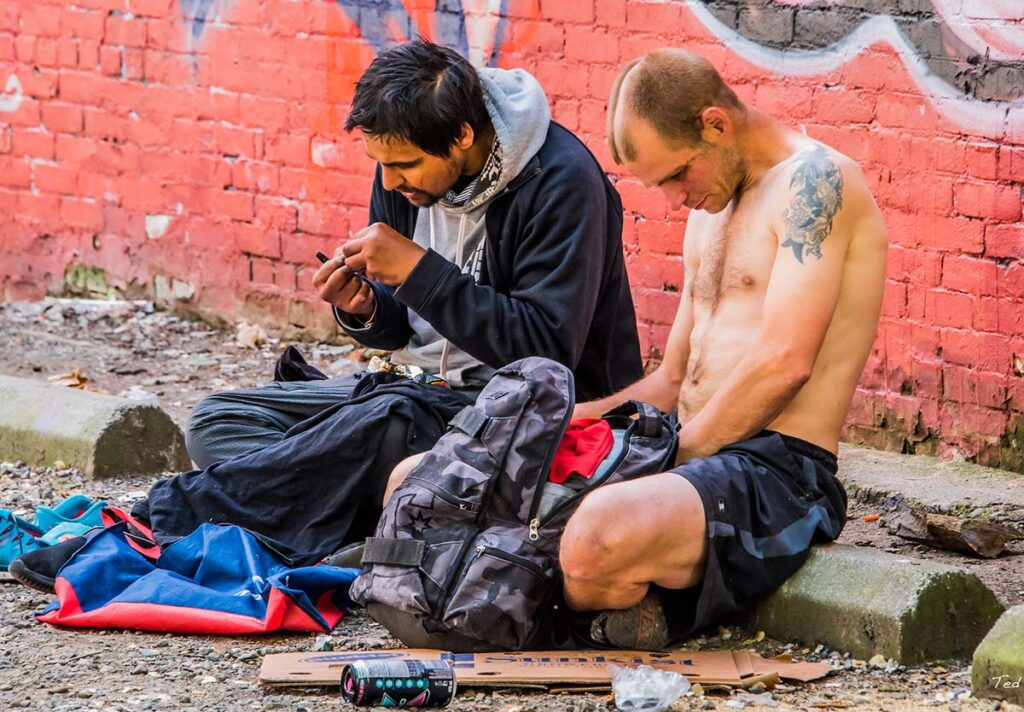The Downtown Eastside was once a bustling neighbourhood filled with working-class families and the beating heart of Vancouver’s social and cultural fabric. However, its fall from grace can be traced back to decades of poor urban planning, economic neglect, and failed social policy. Low-income housing became concentrated in the area, attracting vulnerable populations, including those struggling with mental illness, substance abuse, and homelessness. Instead of creating a plan to revitalize the area, policymakers essentially allowed it to become a containment zone for society’s most vulnerable.
Today, the DTES has become synonymous with poverty, drug use, and crime. Its streets are lined with makeshift tents, discarded needles, and a growing number of people experiencing homelessness. Yet, the same progressive policies that claim to support the marginalized seem to be exacerbating the very issues they are meant to solve.
There’s no denying that compassion is an essential part of social policy. However, there is a difference between compassionate care and unchecked tolerance for destructive behaviours. Over the years, Vancouver’s harm reduction policies, including safe injection sites and housing-first initiatives, have had mixed results in the DTES. While these programs have undoubtedly saved lives in the short term, they have arguably failed to address the root causes of addiction and poverty. Take Insite, for example, North America’s first legally supervised injection site, which opened in 2003. Though hailed internationally as a success, it has done little to stem the growing tide of addiction and open drug use in the DTES. Instead, the area has seen an influx of people seeking services, further entrenching the cycle of addiction and poverty.
What’s more, Vancouver’s housing-first policies, which prioritize providing housing without requiring individuals to address their substance use or mental health issues, have created pockets of drug activity within social housing. While the intent behind these policies is well-meaning, they seem to be missing a critical element—accountability.
Downtown Eastside’s issues cannot be solved by simply pouring more resources into harm reduction. What it needs is a balance between compassion and accountability. Some argue that Vancouver has become too lenient in its approach, allowing problems to persist rather than challenging individuals to take steps toward recovery and self-sufficiency.
Look at historical examples of urban renewal. Cities like New York, which once faced similar crises in neighbourhoods like the Bowery and Times Square, saw success through supportive services and strict law enforcement. These revitalization efforts required a concerted effort to provide housing and treatment, enforce laws, and reduce crime, making these areas safer and more livable for all residents.
If Vancouver wants to bring about meaningful change in the DTES, it needs to be willing to adopt policies that encourage responsibility and rehabilitation. This could involve stricter drug law enforcement, a rethinking of harm reduction strategies, and a focus on job creation and skills training for those living in the area.
While Downtown Eastside remains in crisis, it’s essential to recognize that the consequences of inaction are not confined to the area itself. Vancouverites from all corners of the city are affected by the strain that DTES puts on social services, policing, and healthcare. The financial costs of maintaining the status quo are significant, but the social costs are even greater.
As the DTES grows more notorious, its reputation affects tourism, real estate, and the safety of neighbouring communities. Small businesses in the surrounding areas struggle with theft, vandalism, and a diminishing customer base, while nearby residents wonder how long they can endure living so close to a neighbourhood in freefall.
It’s clear that Downtown Eastside needs a new approach – a strategy that pairs compassion with accountability. The city must invest in long-term solutions that promote self-sufficiency and personal responsibility. This means transitioning away from policies that manage homelessness and addiction toward those who genuinely seek to resolve these issues.
First, social housing programs should include treatment and job training requirements, helping residents build the skills necessary to reintegrate into society. Second, the city should create stronger partnerships with local businesses to provide employment opportunities for those ready to work. Finally, law enforcement must be empowered to address the rampant crime and drug activity that has become all too common in the DTES.
Redevelopment should also play a vital role in revitalizing the area. Vancouver’s government and private sector must work together to attract investment in affordable housing, mixed-use developments, and community spaces that serve the needs of all residents. Incentivizing businesses to open shop in the DTES could provide economic opportunities while simultaneously reducing the concentration of poverty in the neighbourhood.
Vancouver’s Downtown Eastside story is one of tragedy and missed opportunities. For too long, the city has been content with band-aid solutions that fail to address the neighbourhood’s core problems. But there is hope—if we’re willing to change the narrative. The DTES can become a symbol of renewal rather than decline. By embracing a balanced approach that combines compassionate care with accountability and economic revitalization, Vancouver can begin to turn the tide. This is not a time for half-measures but for bold and decisive action. It’s time to rethink the way we address poverty, addiction, and homelessness in Vancouver – before it’s too late.
We want to thank David for sending his opinion to vancouver@downtowneastside.org and remind you that if you have something to share with the community, don’t hesitate to contact us, and we’ll do our best to ensure it reaches others. Downtown Eastside will continue to be a hot-button issue in the coming years, but change can start now. What do you think? Should Vancouver’s leaders rethink their approach to this community, or is the current strategy the best we can do? Share your thoughts below and join the conversation.
DOWNTOWNEASTSIDE.ORG is a collective author account used by several DTES contributors to discuss key issues and events in the neighbourhood. Articles under this authorship reflect diverse perspectives from those directly connected to the community. If you’d like to reach a specific contributor, please contact us via email.





Leave a Comment